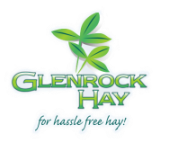Prime hay is the classification given to hay that has good green colour, plenty of intact leaf, and relatively finesoft stems. It may contain up to 10% of other plant material, such as grass, but should be free of prohibited weeds and mould, fungi, or weather damage. There is actually a grade above prime, Choice, that is more pure, and of a higher standard all around. These classifications do not specify age, but most people assume prime hay to be prime green, which is as fresh as possible (generally less than a month).
Shedded hay simply means that the hay has been stored for a period of time. As a rule this would need to be at least 2 months, but could be up to several years. (though there aren’t too many people that can hang on to hay for longer than a year). The problem with this description is that it doesn’t distinguish between good quality hay and poor quality hay. Thus when asking for shedded hay always ask about the quality. For example a 20 yr old house could be a mansion, or a fibro shack, the age only tells you so much. Advantages of prime hay are that it is of a slightly higher moisture content, resulting in less leaf loss which often occurs on the more brittle shedded hay, (most of the nutrients are in the leaf and the stems are mostly fibre), softer texture, prettier colour, and the guarantee of quality. The down side is that it often gives animals the runs. Shedded hay is less likely to go straight through an animal, due to the reduction in the more mobile nutrients during the first month after storage. It has also proved that it is not going to go off, whereas fresh hay may still go mouldy if the moisture level is too high. The major disadvantage is its brittleness which can be overcome by soaking prior to feeding if a problem. It comes down in the end to what works for your animals. If they like it and do well on it then you’re probably doing the right thing.

 RSS Feed
RSS Feed
